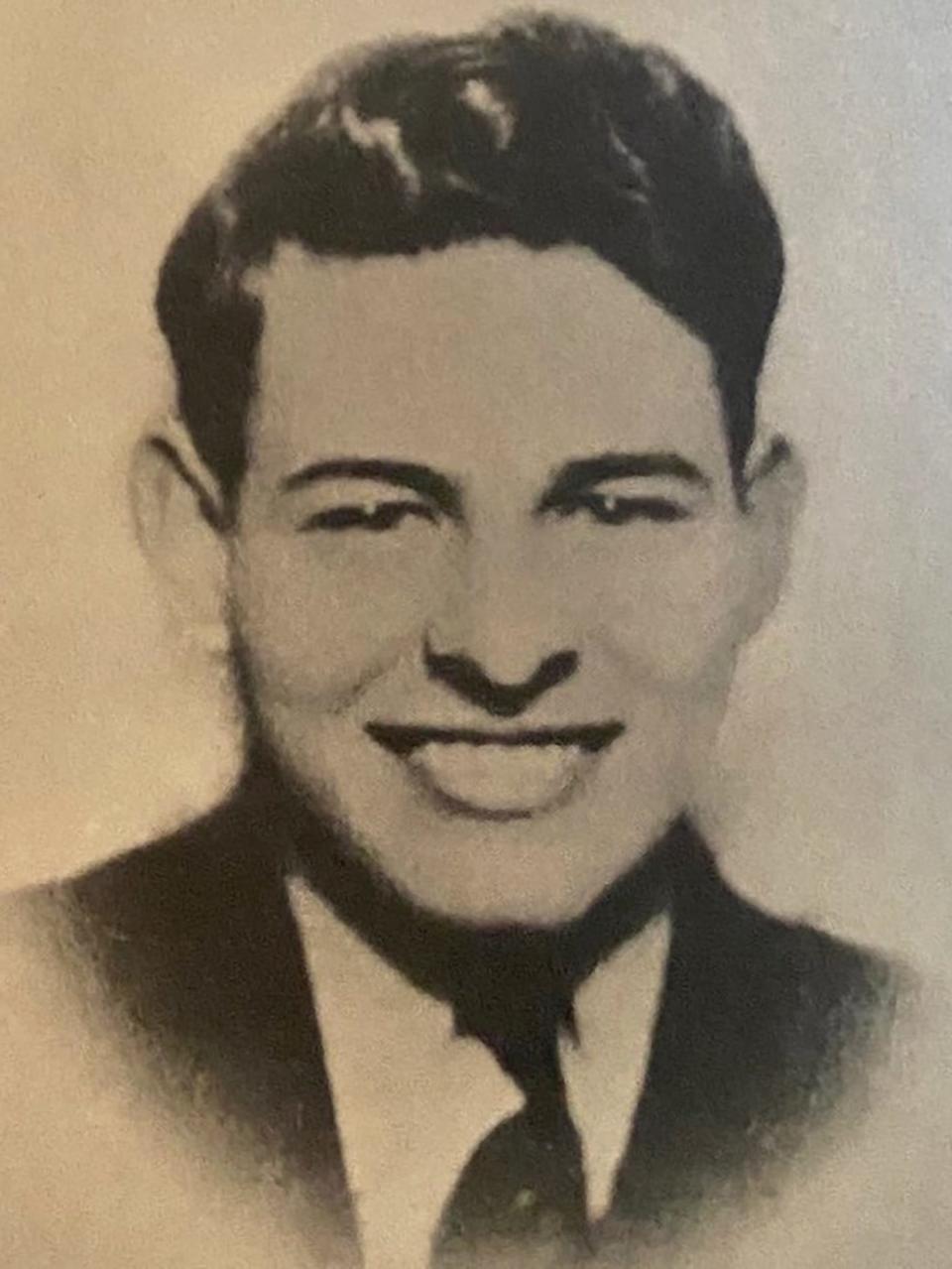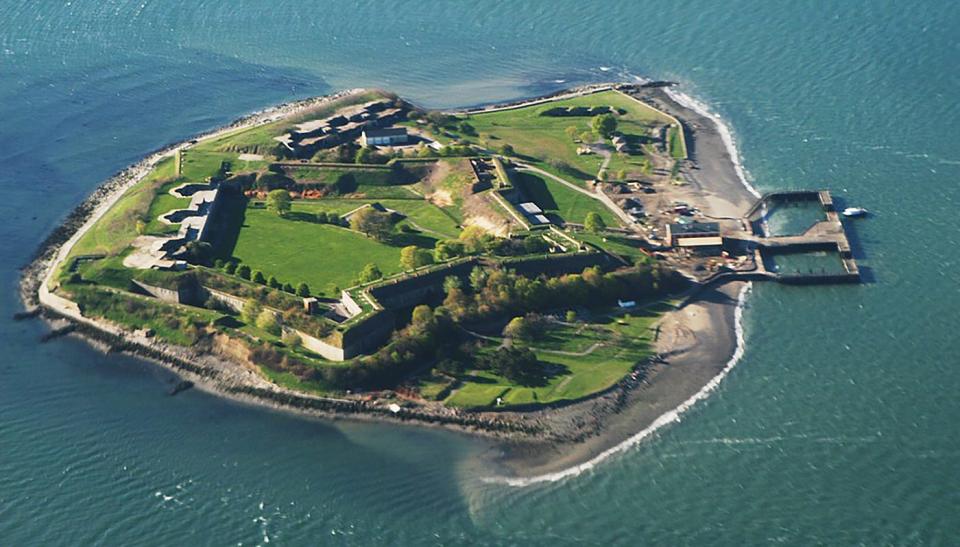Remembering Local World War II Heroes: Ferdinand B. Trudel, Part 1
Pvt. Ferdinand B. Trudel of Gardner was the first area casualty during the World War II era. Although his death occurred before Pearl Harbor and prior to the U.S. involvement in World War II, no other loss has been shrouded in more mystery and suspicion over the years.
While stationed at Fort Warren, which was located at Georges Island just off the coast of the entrance to Boston Harbor, Trudel exhibited some erratic behavior. He was eventually sent to Fort Banks in Winthrop, Mass., where, upon arrival, he was found to have some mysterious injuries.
Tragically, he died about three days later in Massachusetts General Hospital.
Medical Examiner William J. Brickley, who performed the autopsy, declared Trudel’s death was caused by general peritonitis due to a rupture of the gallbladder and contusions of the intestines. The doctor said he was unable to say where or when Trudel suffered the injuries.
“My family could never get any answers,” said Trudel’s brother, Robert “Pete” Trudel, who was only 9 years old and in the third grade at Holy Rosary School at the time of his eldest brother’s death. “We could never get any answers from anybody.”
This is the continuation of the series Remembering Local World War II Heroes.
Pvt. Ferdinand B. Trudel (1918-1941)
Ferdinand B. Trudel was born on Oct. 13, 1918, in St. Guillaume, Quebec, Canada, the oldest of six children born to Theogene and Louise (Lariviere) Trudel. His maternal grandfather owned Gardner Brickyard on West Broadway and the family lived nearby.

“We lived at the Brickyard and we all worked there growing up,” recalled his brother, Pete, who noted that his brothers, Ferdinand, Maurice and Ronald, all worked there. They also had an older sister, Pauline, while brother Eugene was born in 1941 with Ferdinand in the service.
Ferdinand attended Holy Rosary Parochial School and was briefly at Gardner High School before leaving to work at the Gardner Brickyard.
Trudel was a volunteer member of the Selective Service contingent that entered the Army at Fort Devens on Feb. 14, 1941, as one of Gardner’s first inductees.
“I think he registered for the draft or he may have gotten drafted,” said Pete. “He was a very quiet kid. I don’t think he ever had a girlfriend and he probably never even had a drink. He had never even been out of Gardner before.”

Trudel was later transferred to Fort Banks, a U.S. Coast Artillery fort in Winthrop, where he was a member of the Second Provisional Battery, Ninth Coast Artillery Battalion. After two weeks, he was sent to Fort Warren in Boston Harbor for training.
Fort Warren was built in 1852 and served as a prison for captured Confederate soldiers during the Civil War. It was likely not a very pleasant place to be, particularly from someone who likely had limited experiences of being away from home.
By World War II, the fort would serve as a control center for Boston Harbor’s south mine field, a precaution taken in anticipation of potential attacks by German U-boats. It was garrisoned by the 241st Coast Artillery Regiment (Harbor Defense), a Massachusetts National Guard unit that was federalized in September 1940.
According to reports, two weeks into his service, Trudel’s actions became erratic while at Fort Warren, so he was returned to Fort Banks for mental observation. From there he was placed in a straightjacket and subsequently taken in an Army ambulance to the Boston Psychopathic Hospital on Feb. 28.
No doubt the trip to Boston was probably the furthest he had ever been away from home, and his homesickness along with the rigors of basic training likely exacerbated his anxiety level.
At that point, there were conflicting reports of what actually happened next.
Army officials at Fort Banks insisted that, except for an infected abrasion of the left cheek, Trudel had no visible injuries or any symptoms of internal injuries. However, officials at Boston Psychopathic Hospital said his body was literally covered with bruises, his jaw badly swollen, and there was a marked tenderness shown in his abdomen when he reached that institution.
Dr. Solomon Gagnon, superintendent of Boston Psychopathic Hospital, reported in a Boston Globe story that Trudel “was a mass of bruises” when he arrived. However, Lt. Col. Dean F. Winn, post surgeon at Fort Banks, refused to acknowledge any wrongdoing by his staff.
“It is simply a difference of opinion. We don’t agree,” said Winn in the Globe story. “Nothing happened to Trudel while he was here. He was given the kindest treatment. I have had the matter investigated thoroughly, and I am certain he received no mistreatment. He had no bruises or symptoms of injury, other than the abrasion on his cheek. I knew about that. It was self-inflicted in some manner. Whether he hit himself or threw himself against something, we do not know.”
From there, Trudel was transferred to Massachusetts General Hospital, at the urging of his parents, and he died there on March 8, 1941, at the age of 22.
However, while that was the end of Trudel’s life, it was only the beginning of the controversial story.
Note to readers: This story will continue on May 31.
Comments and suggestions for Remembering Local World War II Heroes can be sent to Mike Richard at mikerichard0725@gmail.com or in writing to Mike Richard, 92 Boardley Road, Sandwich, MA 02563.
This article originally appeared on Gardner News: Remembering Local World War II Heroes: Ferdinand B. Trudel, Part 1

